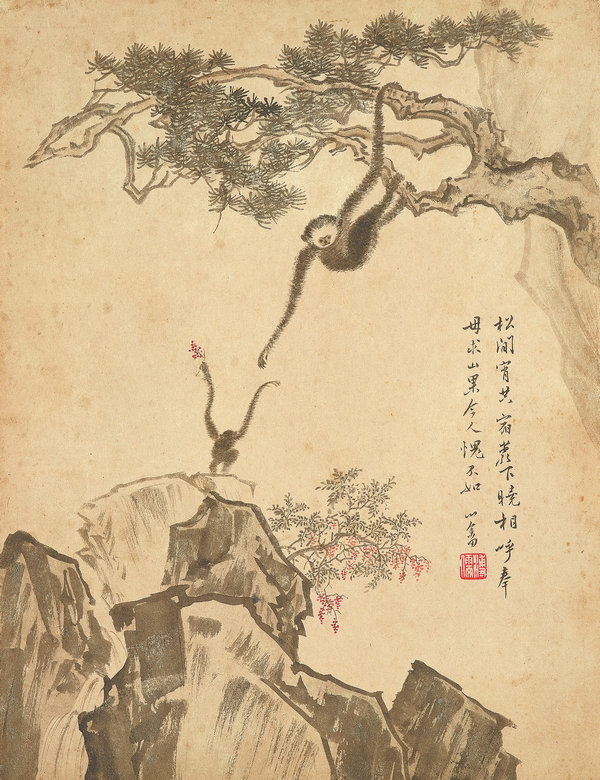

The life of Puru (1896-1963), also known as Pu Xinyu, was full of ups and downs.
He was from the royal house of the Qing Dynasty (1644-1911) and was a cousin of its last emperor Puyi. After the fall of the Qing, Puru juggled between supporting his family and his art as he struggled to make a name.
He experienced social chaos and wars. Born in Beijing, he passed away in Taipei.
In his classic Chinese paintings, Puru presented elegance, serenity and peace. He became a renowned artist as evident in such saying as "Zhang in the South and Pu in the North". "Zhang" was Zhang Daqian, another master of the same era.
Addressing an intensified interest in Puru's art, Confucian Elegance, an exhibition commemorating the 60th anniversary of his passing, will open in Hong Kong on Saturday, and run until Nov 22. The 40-plus pieces on show are from the family of a close friend, and 15 of them will be auctioned at a Bonhams sale of Chinese paintings on Dec 2.
The exhibition will be a celebration of Puru's recognition as a consummate painter, calligrapher, poet and scholar. His accomplishments are derived from the years of his childhood and youth spent at Prince Kung's Palace, formerly the residence of his grandfather Yixin, and now a public museum. There he was educated in Chinese classics and also learned to appreciate an art collection of rarity and brilliance.
The cultural atmosphere in which he was cultivated helped Puru hone his techniques and taste. He cofounded the famed Songfeng Painting Society in Beijing, in 1925, to promote the traditions of classic Chinese painting.

Works that will be on show include Guanyin, a monochromatic figure painting that depicts a seated Guanyin (Goddess of Mercy) on a suspended rock above a river, a pine tree and a waterfall. Rex Lin, a senior specialist of Chinese paintings at Bonhams, says the work is an example of Puru's reputation for drawing Guanyin, and the refined outlines render the composition both majestic and vigorous.
Painting with his fingers was a favored technique and the exhibition will highlight this with Fingerpainted Zhong Kui, a depiction of a Chinese mythological hero who hunts demons. According to Lin, Puru liked stories of mythological figures, ghosts and immortals, motifs which he often revisited in his work, sometimes for fun and at other times to express humor and sarcasm.
Above all, Puru's style is "elegant and delicate, if compared to other major painting styles at the time", Lin says, "for which he then earned the reputation of a master of the literati painting style".
In addition to Puru, classic pieces from other renowned artists, including Hong Ren from the 17th century, Xu Gu from the 19th century and modern master Huang Binhong, are to be sold at Bonhams in Hong Kong.